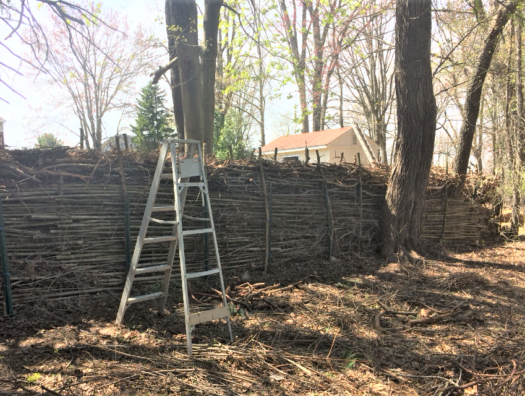Living Woven-Willow Brush Fence
- Bill Wilson
Another Experiment at Midwest Permaculture
How one can attractively store woody brush to give it time to break down.
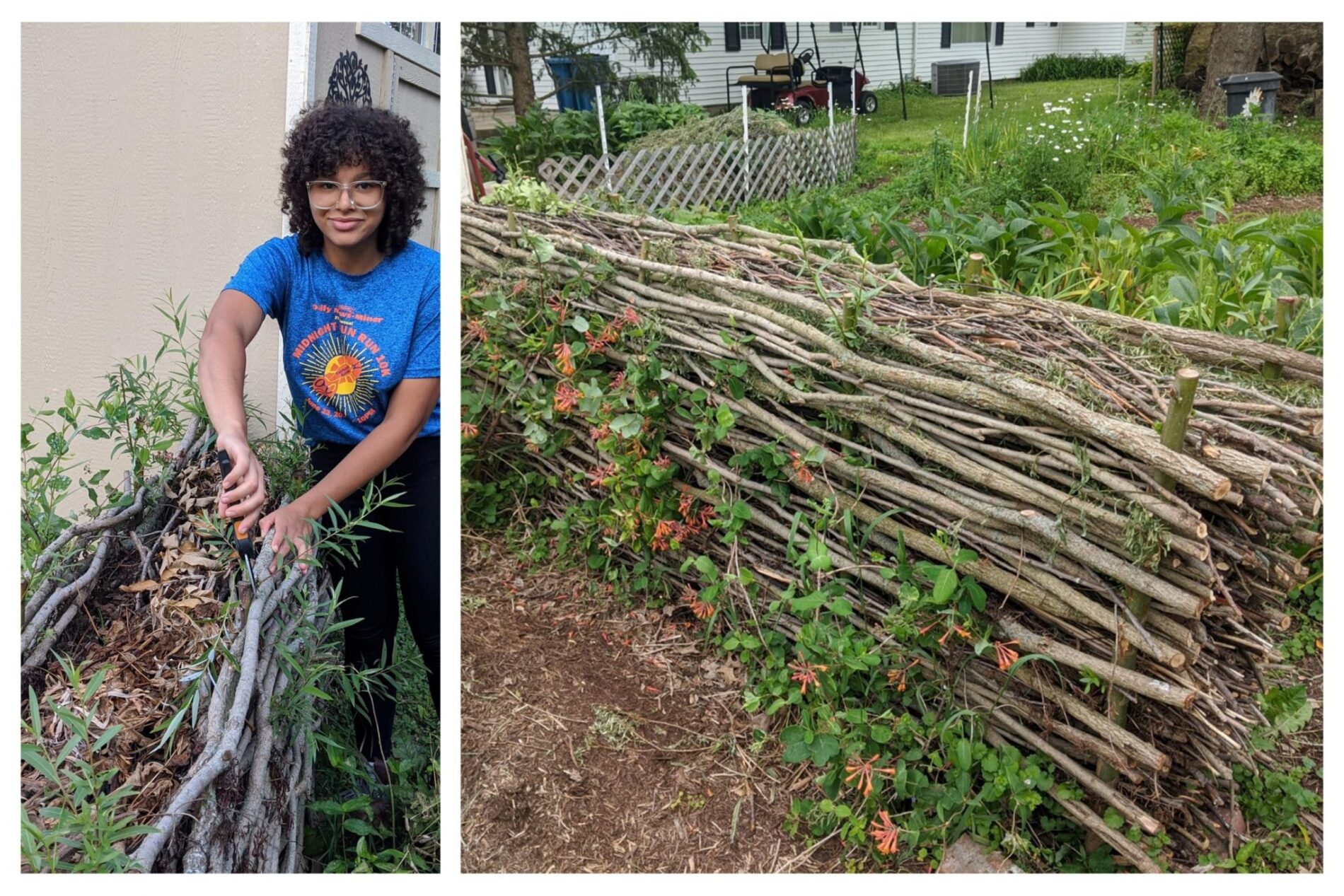
Hello permaculture friends. We wanted to give something a try. We have not seen this exact design in the literature or on YouTube (although it certainly could be out there) but the idea is to use our yard brush while also building a sturdy fence.
We wanted a fence that could be made from easily available willow, allow time for the finer brush from our yard that we packed inside to cold-compost in place thus fertilizing the plants near it, while also having something that looks nice in our backyard and neighborhood.
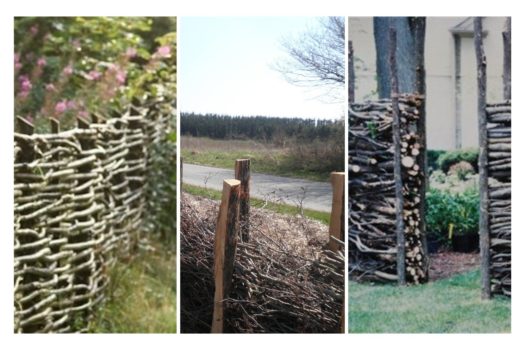
We came up with a combination of all these and are calling it a Woven-Willow Brush Fence for the obvious reasons, but we added the ‘Living’ prefix because the upright stakes are actually made from young austree-willow trunks which we drove a foot into the ground. Our thoughts and hopes were that the the living posts might actually sprout (like willow commonly does) and set down roots. They did!
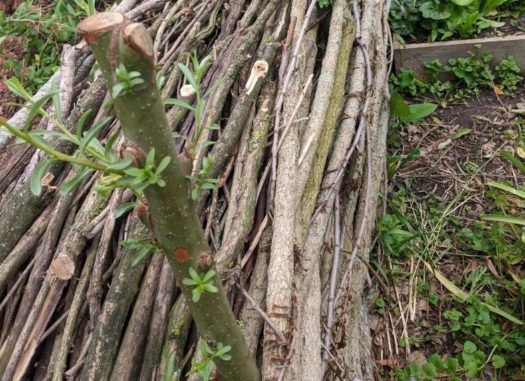 These uprights might be alive now for dozens (if not hundreds) of years which means they won’t rot or need replacing every few years. If the shoots coming off of them are pruned regularly we can keep the posts relatively narrow instead of them turning into 75′ high trees. Think ‘bonsai’!
These uprights might be alive now for dozens (if not hundreds) of years which means they won’t rot or need replacing every few years. If the shoots coming off of them are pruned regularly we can keep the posts relatively narrow instead of them turning into 75′ high trees. Think ‘bonsai’!
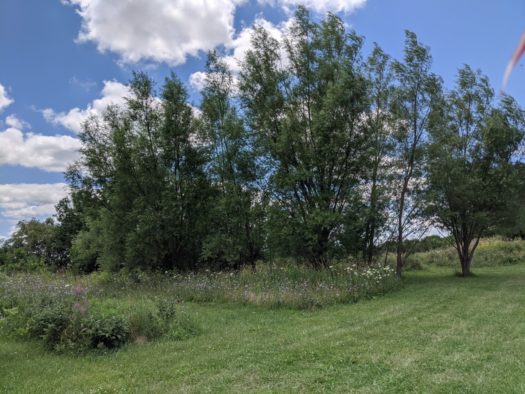
Here is what 10 year old austree willows look like if they are not pruned. We certainly don’t want anything like this in a small space in our back yard.
The reason we went to the austree for posts is that as a willow they are relatively easy to germinate (they will send out roots and keep growing) and we already had the perfect size to make the posts on our CSC project property, right next to Stelle.
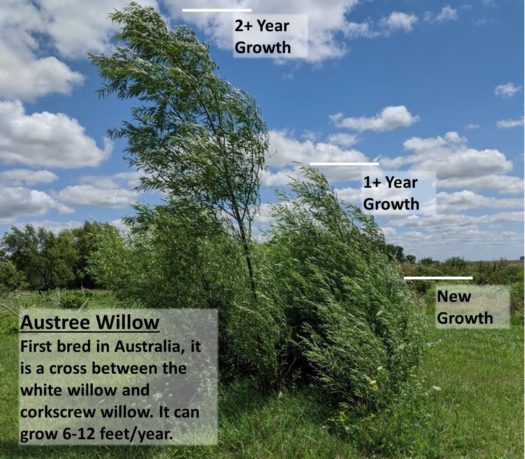
We created this austree germination bed several years ago when we were trimming the larger austrees. We have been pulling cuttings from this bed for various purposes in recent years. So we took out five of the 2-year old trees and cut the trunk lengths in half to make 10 posts. They are about 1.5″ in diameter.
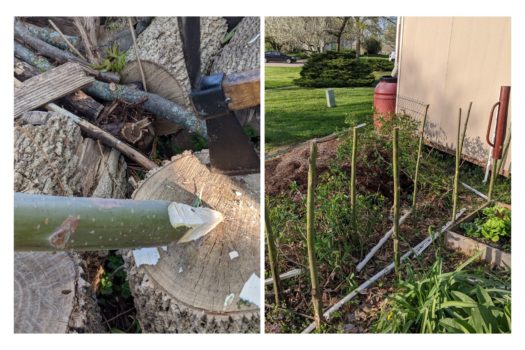
We sharpened the large ends of the 60-inch-long posts and drove them into the ground 12″ deep to leave 48″ (4 feet) exposed. The T-post driver worked perfectly for this.
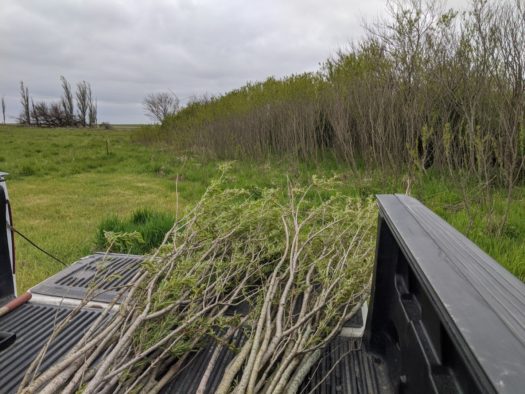
We then harvested ~12′ lengths from this black willow brush patch on the CSC land.
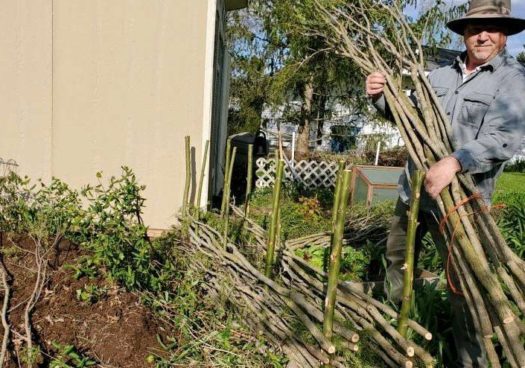
Photo: Bill holding willow for weaving
We would begin each layer of the weave with the large end of the branch, one on each side of a post, and weave them back-and-forth around each of the subsequent posts to the other end. Once there we would trim off the excess tips evenly to give it a clean finish. Then we would reverse this, starting from the other end and working back.
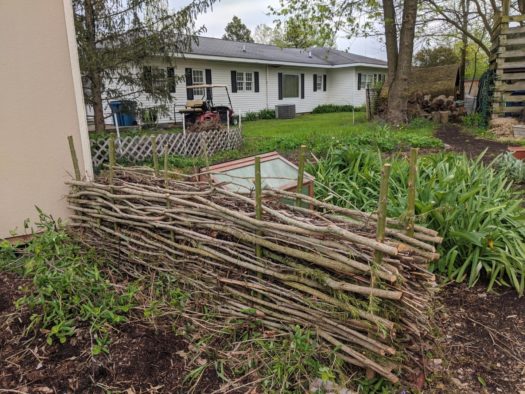
It didn’t take long and the walls began to rise.
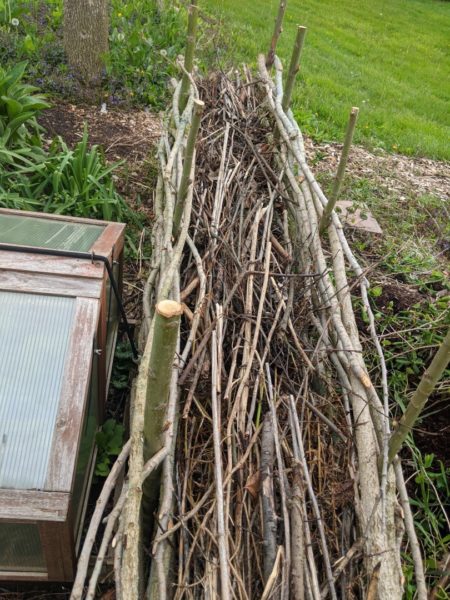
As the walls grew we started packing our finer brush into the middle.
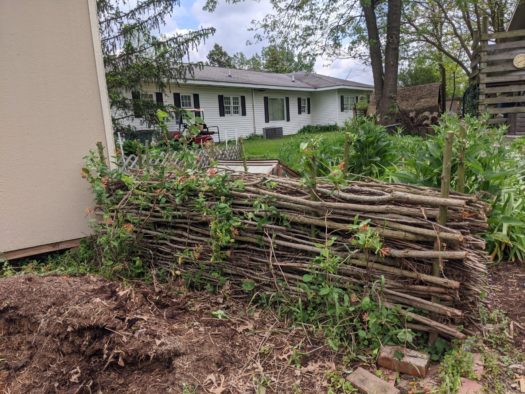
Once tall enough, we attached our already established trumpet honeysuckle to the fence which will become a wall of flowers by fall.

We love the hummingbirds that are attracted to the trumpet honeysuckle flowers.
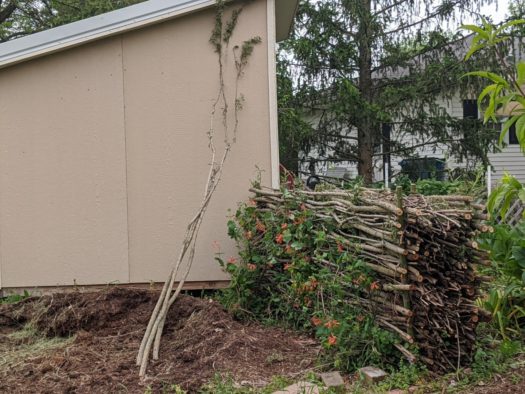
We worked on this as we had time and within 4 weeks we made it to the full 4-foot height.
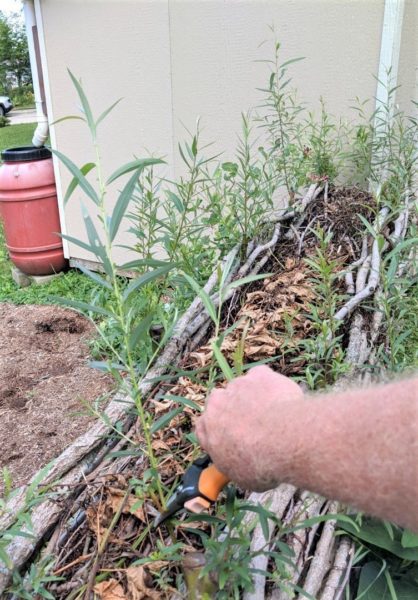
Within 6 weeks we were already trimming back the sprouts off the austree posts.
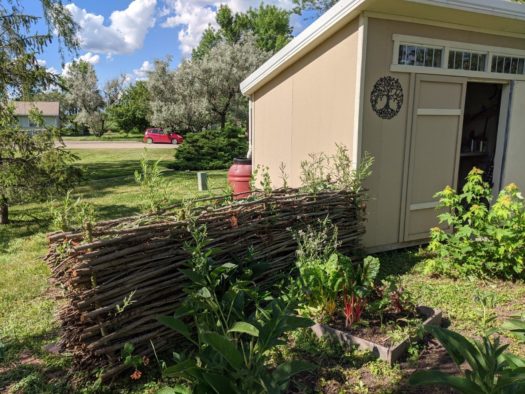
All done.
A lovely way to store woody brush trimmings.
We’ll do our best to add follow-up pictures in the coming years so we can all learn how this fencing idea works and looks over time.
Feel free to share your thoughts, ideas and of your own experiences in the comments below.
Although we are missing the fun this year (2020) that comes with teaching our courses and meeting so many great people as students, we are enjoying working on multiple projects that we just did not have the time to do until this year.
Covid Cheers… Be Safe… Bill and Becky Wilson
P.S. Here is a picture of a taller fence, of similar design, mentioned by Chris in the comments below. Thanks for the picture Chris. I like the way you integrated the existing trees into the structure.
